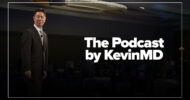It is somewhat cliché these days to talk about physician workforce shortages, but recent data highlights that the problem is getting worse. Two research publications this past year were particularly alarming.
First, in a recent analysis of internal medicine resident career plans from 2019 to 2021, only 9.4% of internal medicine residents indicated they planned to pursue a career in general internal medicine. This is down from 19.9% in 2011 and 25% in 2004. In a second, perhaps even more shocking report by Elsevier Health released this past October, a survey of some 2200 medical students revealed that 25% of U.S. medical students are considering quitting their studies, and a full 63% see their current education as a steppingstone toward a career in medicine that does not involve direct patient care.
Many groups have warned of physician shortages, especially in the primary care arena, for years. The American Association of Medical Colleges’ latest estimate pegs the primary care deficit at as high as 48,000 physicians by 2034, and for the medical subspecialties, as high as 13,000. Such estimates have often seemed abstract to many of us in the profession, like a foreboding of some distant, unrealized future. Certainly, it is not a problem that has historically caught the attention of the public. But in the wake of the pandemic, and the significant stress it has placed on our fragile health care infrastructure, access to a doctor has now become a real-world issue I deal with on a daily basis—vastly more challenging now than at any time in my twenty-five-year career as a general internal medicine physician.
The public is now also taking note, as health care journalist Elizabeth Rosenthal recently wrote in an opinion piece for the Washington Post: “The percentage of U.S. doctors in adult primary care has been declining for years, and is now … (at) a tipping point.” To be clear, it is not only primary care physicians who are scarce. Most specialties are challenged, and the “cognitive” specialties, including endocrinology, rheumatology, and neurology, among others, are some of the most difficult physicians to access, at least from my vantage point, with wait times measured in many months.
Our country spends $4.5 trillion, a full 17.3% of our GDP, on health care. Yet the underinvestment in primary care is staggering. We spend only 6% of health care dollars on primary care, about half of what high-performing health systems in sister countries spend. This, despite the fact that a longitudinal relationship with a primary care clinician is the only aspect of our health care system shown to be associated with better health outcomes, decreased health expenditures, improved health equity, and lower mortality. Yet ironically, the percentage of adults reporting they do not have a usual source of care is actually increasing.
This is the great paradox of our country’s current health care approach. Internal medicine physicians and primary care physicians of any specialty provide some of the greatest value for our health care dollars. But these are the very specialties that perennially remain the most resource-starved.
In order to reverse these worrisome workforce trends, the twin problems of low reimbursement and unsustainable administrative burden must be addressed head-on. Fortunately, multiple organizations have proposed roadmaps to do just that. The National Academies of Science, Engineering, and Medicine has put forward a compelling blueprint in its 2021 report Implementing High-Quality Care, recommending, in essence, that we revamp health care reimbursement by “paying for primary care teams to care for people, not doctors to deliver services.” My own organization, the American College of Physicians, has offered multiple policy prescriptions to create a more appealing path for internal medicine as a career choice, including modernizing reimbursement to reflect how care is delivered today, promoting physician-led teams, and decreasing the myriad unnecessary tasks that lead to physician burnout.
We must do more to make sure that students and trainees see primary care as a sustainable and attractive career path. It is past time to act. The federal government and third-party payers must take bold action, so that all of us will have access to the physicians we need, when we need them, for generations to come.
William E. Fox, MD, FACP is chair-elect, ACP Board of Regents.
The American College of Physicians is the largest medical specialty organization in the United States, boasting members in over 145 countries worldwide. ACP’s membership encompasses 161,000 internal medicine physicians, related subspecialists, and medical students. Internal medicine physicians are specialists who utilize scientific knowledge and clinical expertise for diagnosing, treating, and providing compassionate care to adults, spanning from those in good health to individuals with complex illnesses. Stay connected with ACP on X @ACPIMPhysicians, Facebook, LinkedIn, and Instagram @acpimphysicians.





















![Sibling advice for surviving the medical school marathon [PODCAST]](https://kevinmd.com/wp-content/uploads/Design-1-190x100.jpg)

![Leadership buy-in is the key to preventing burnout [PODCAST]](https://kevinmd.com/wp-content/uploads/Design-4-190x100.jpg)
![Understanding the unseen role of back-to-school diagnostics [PODCAST]](https://kevinmd.com/wp-content/uploads/Design-3-1-190x100.jpg)
